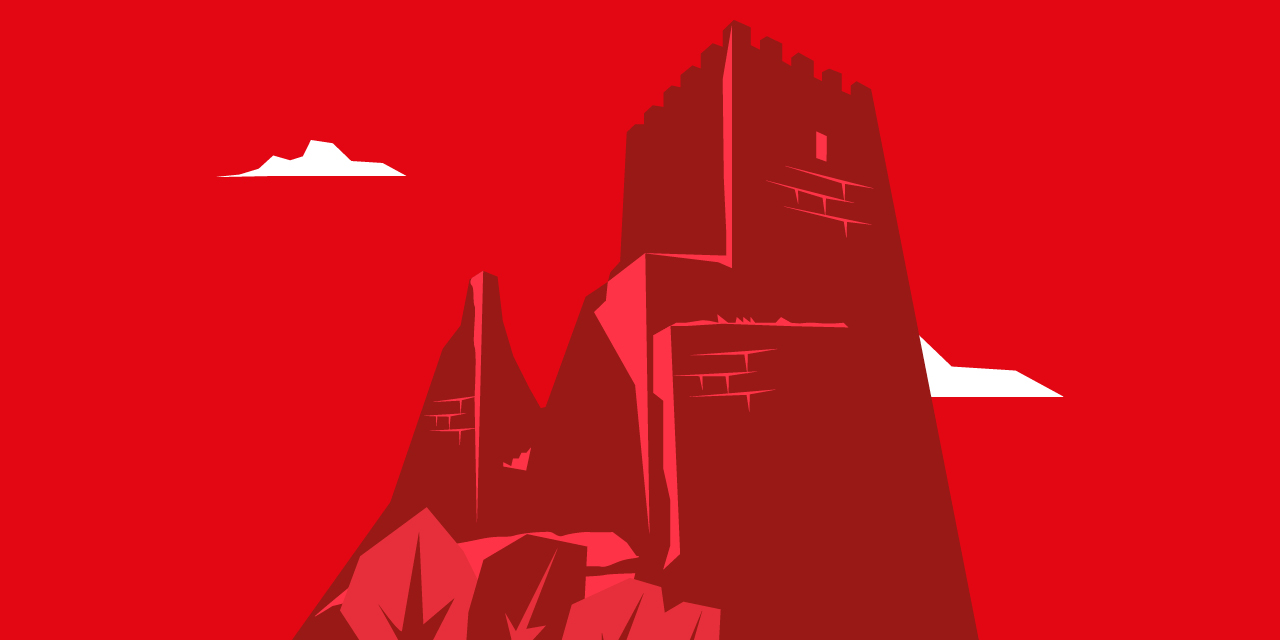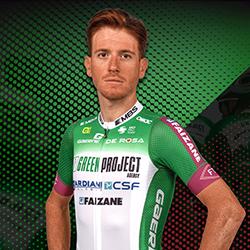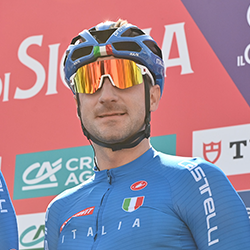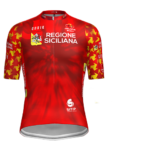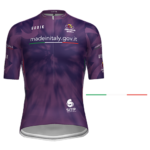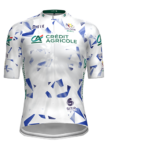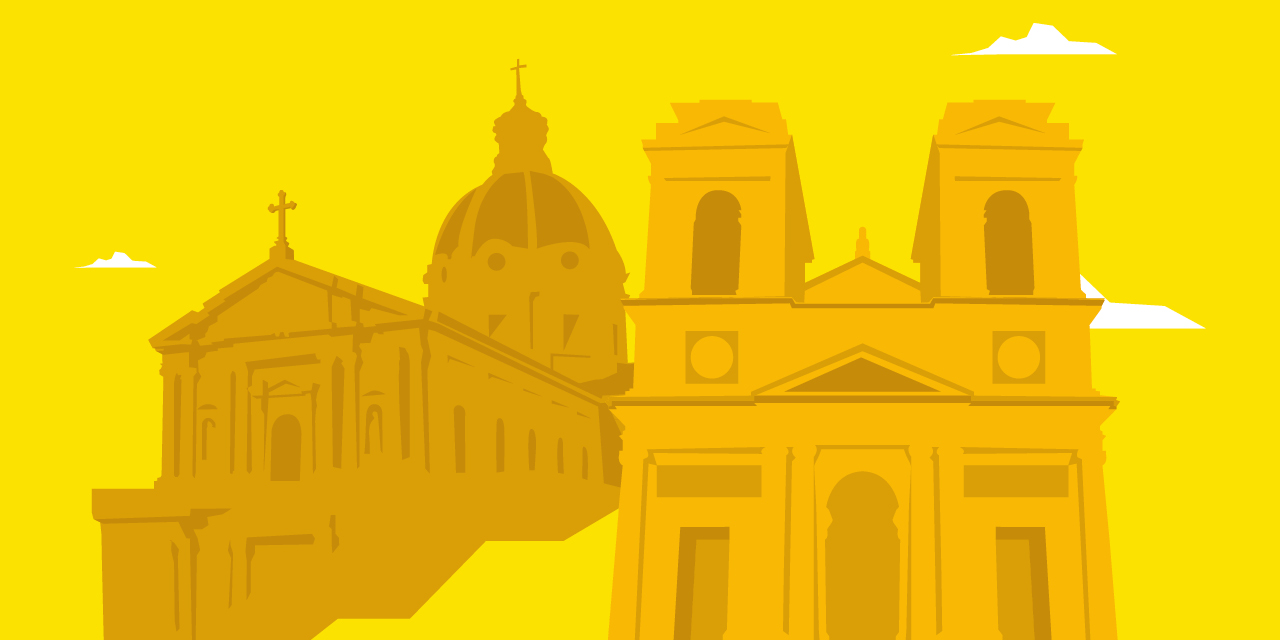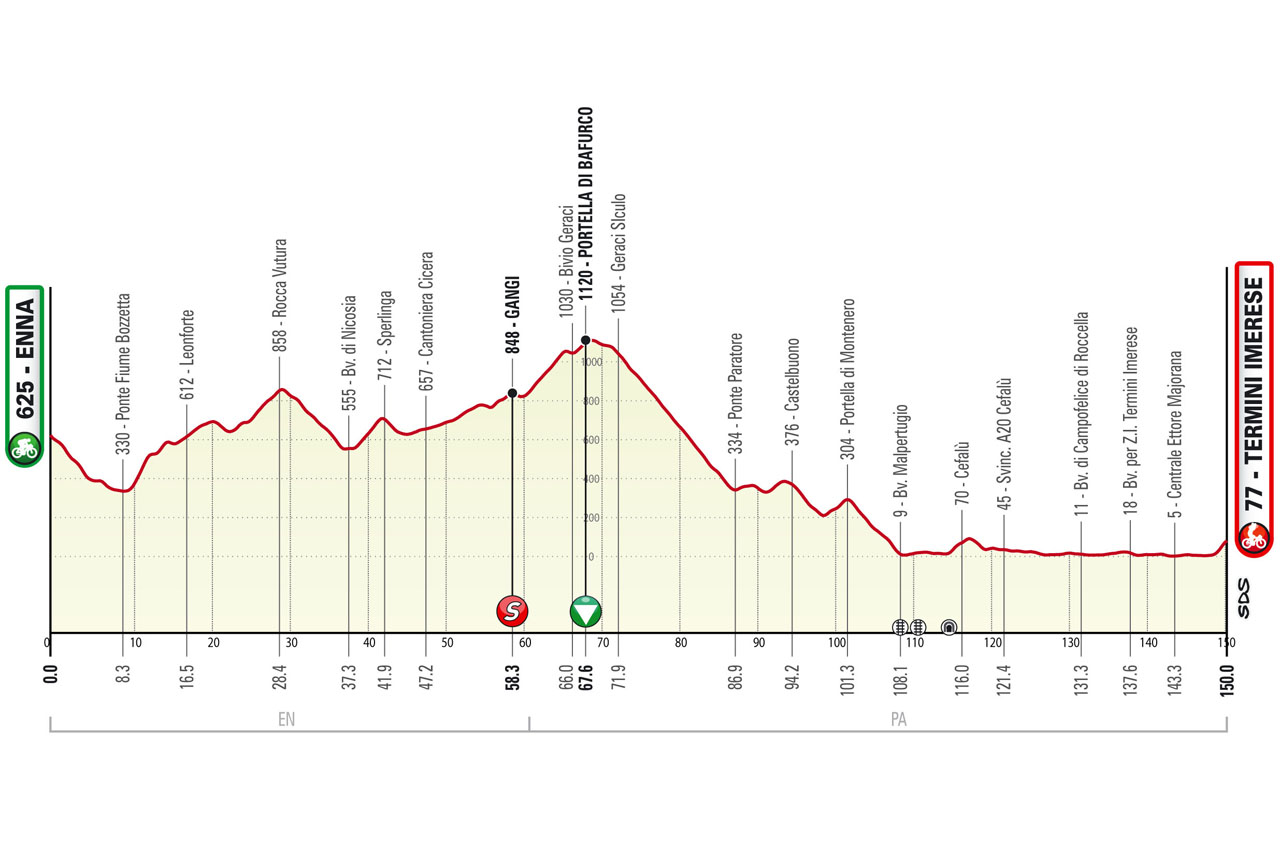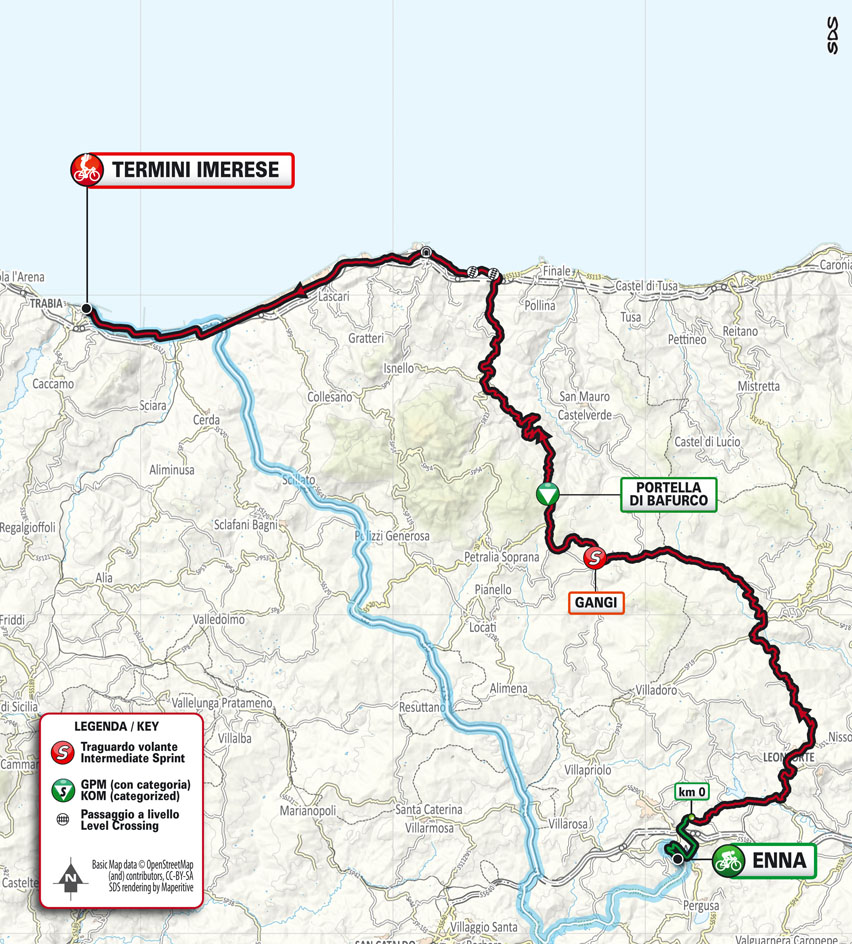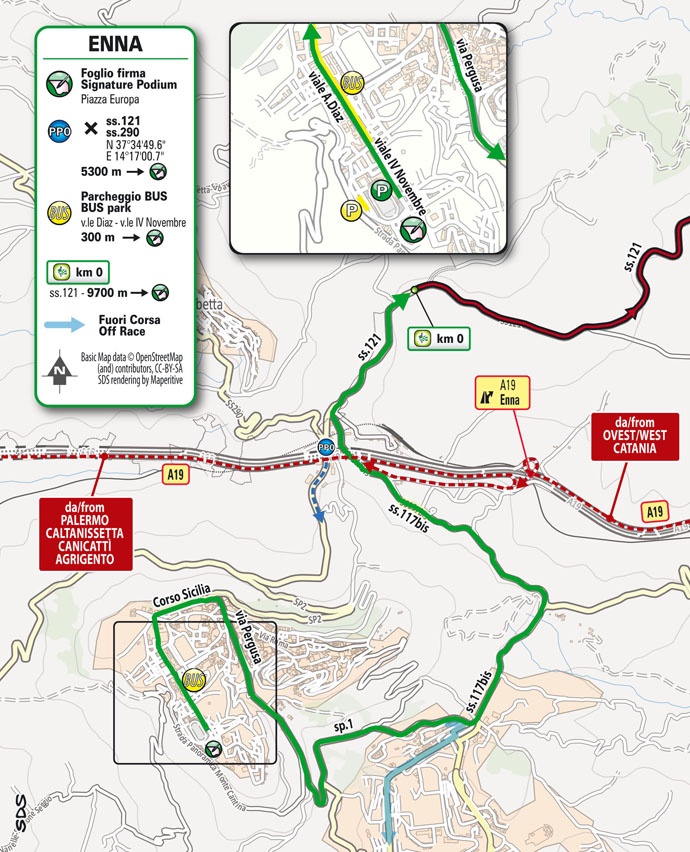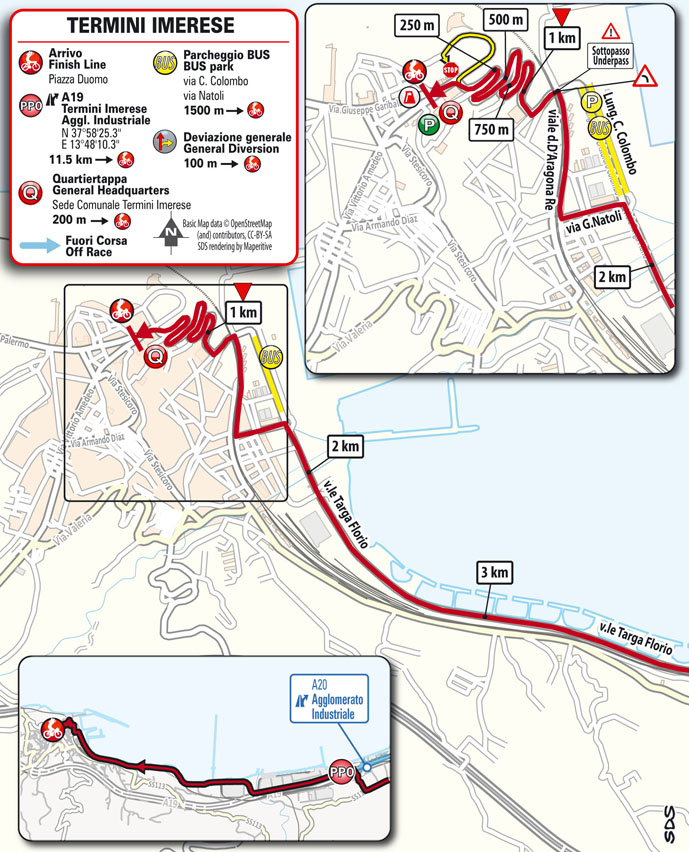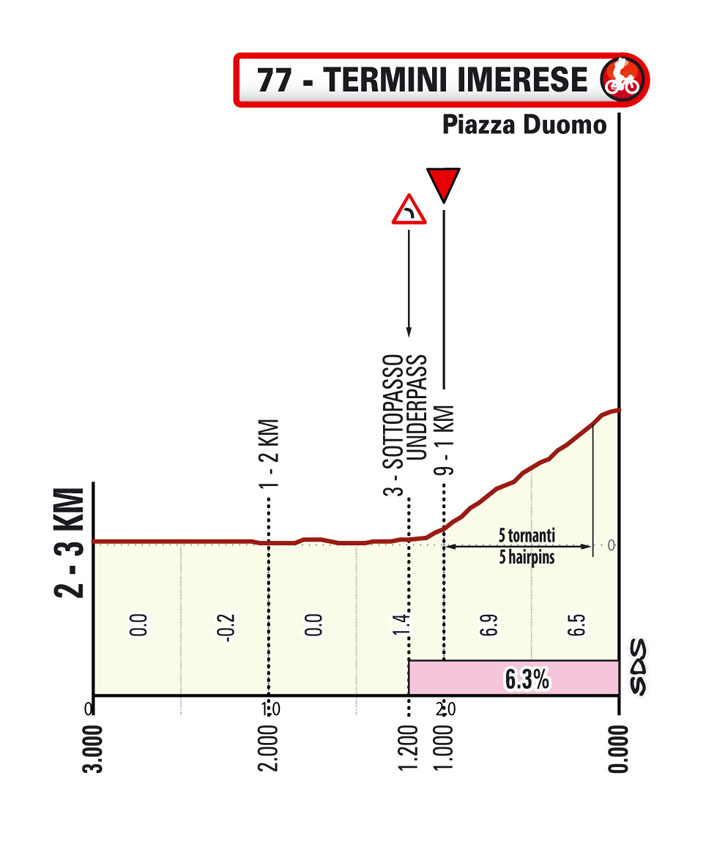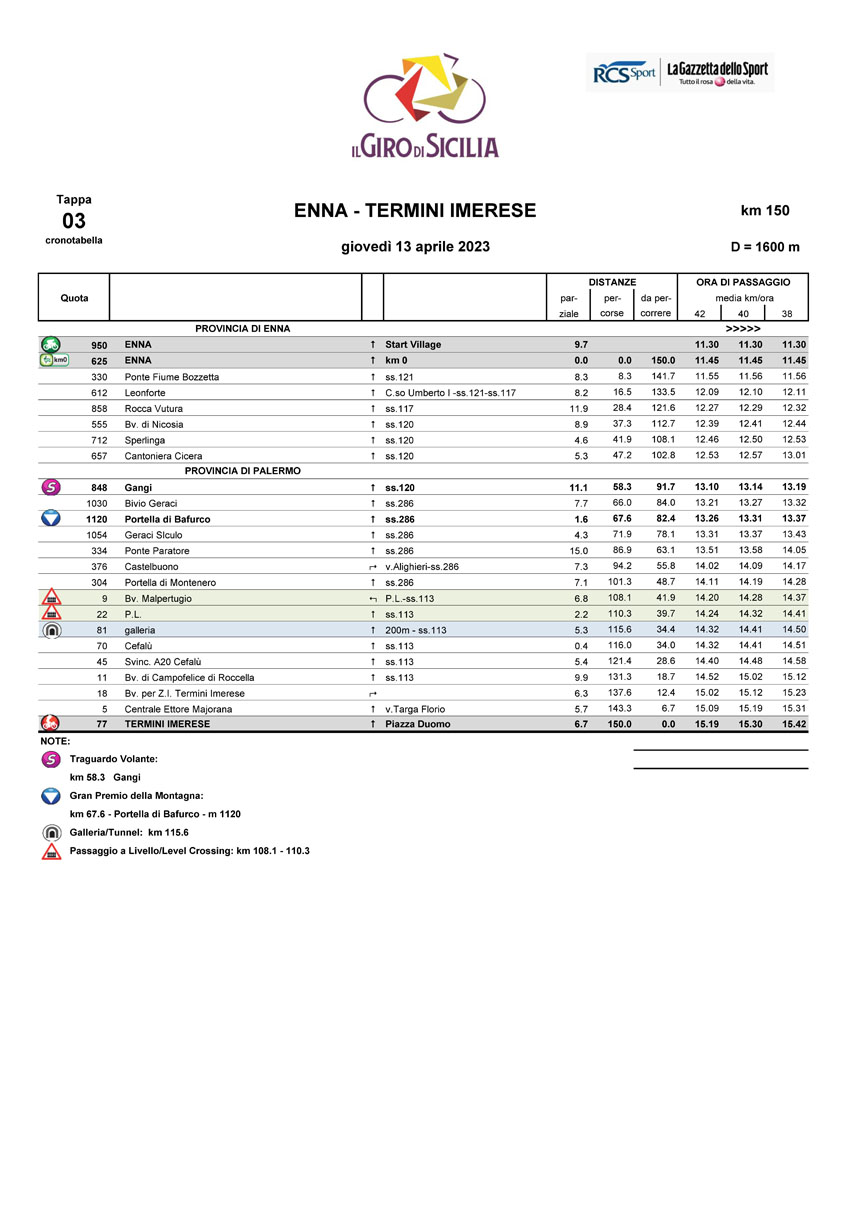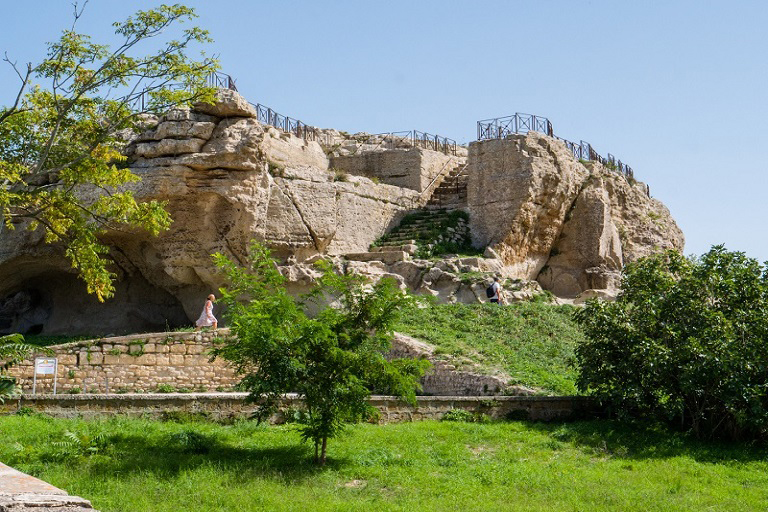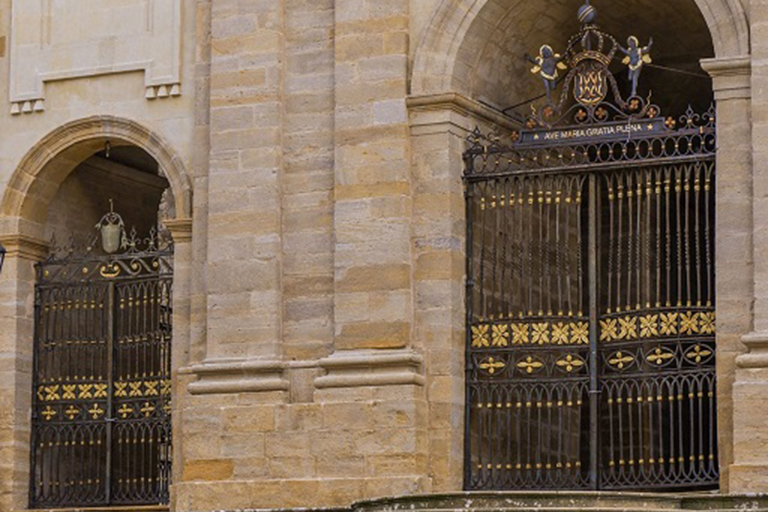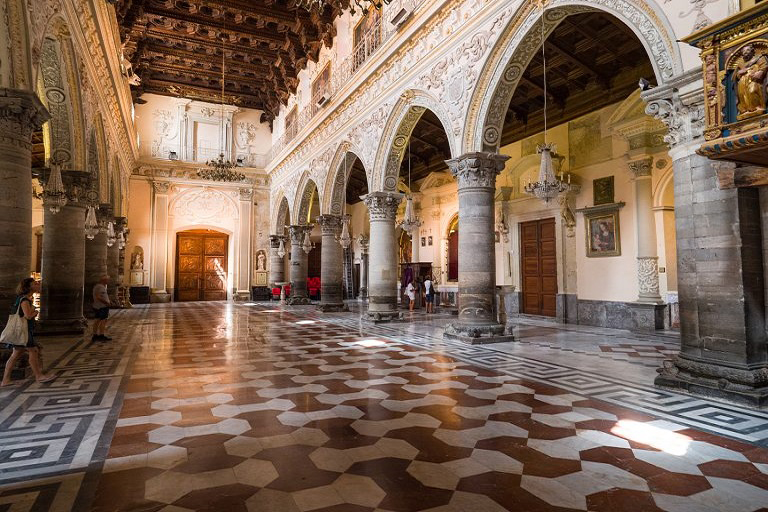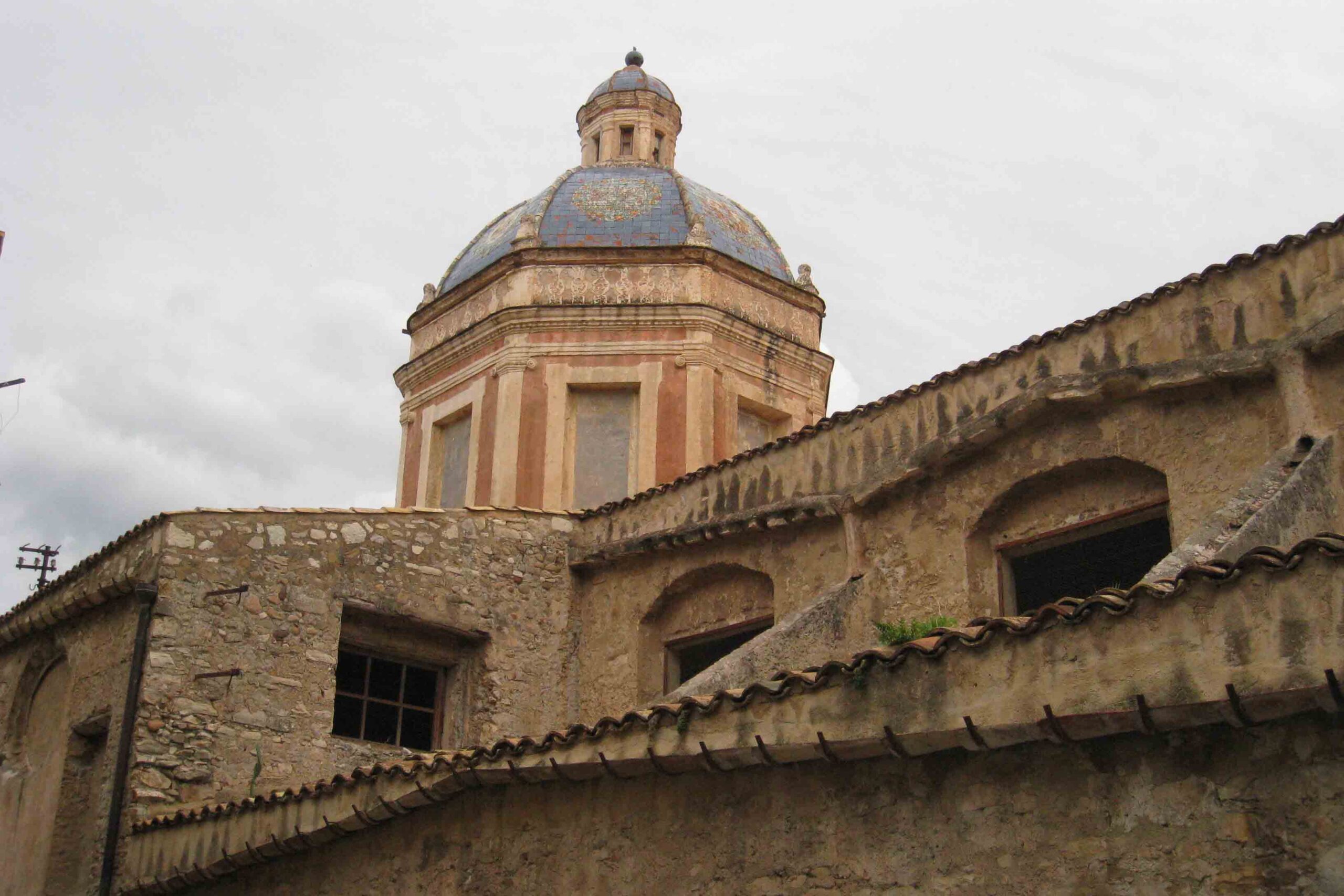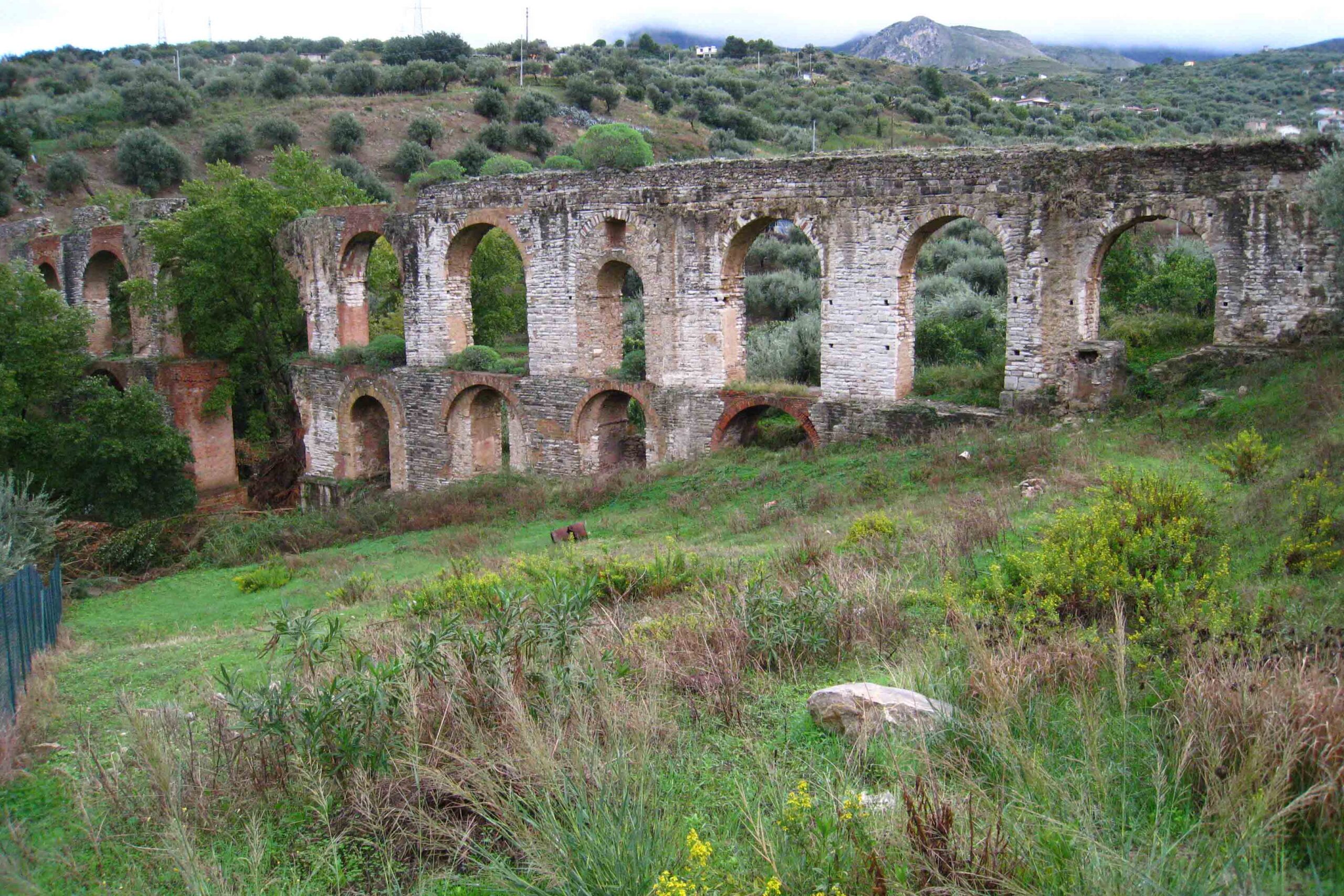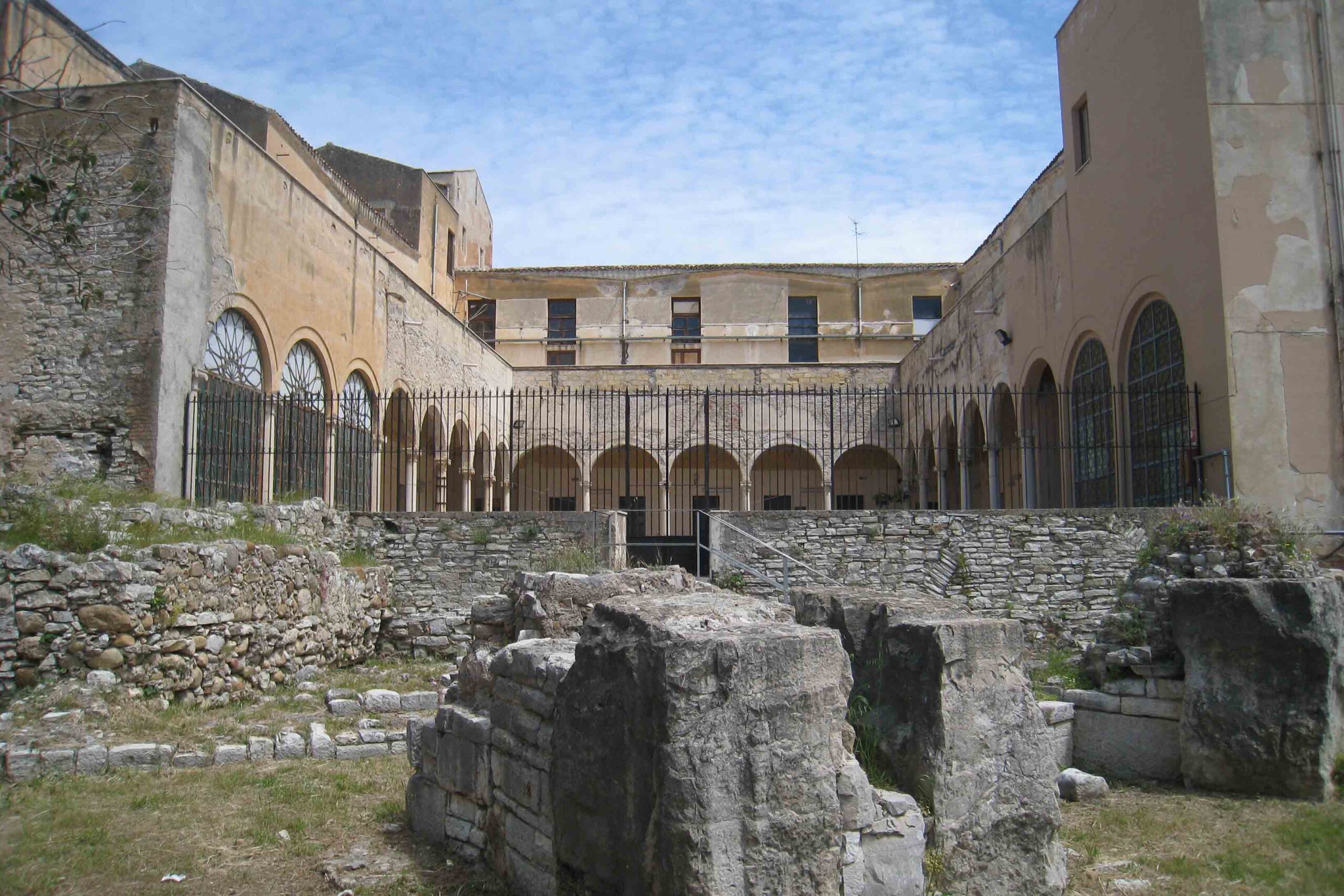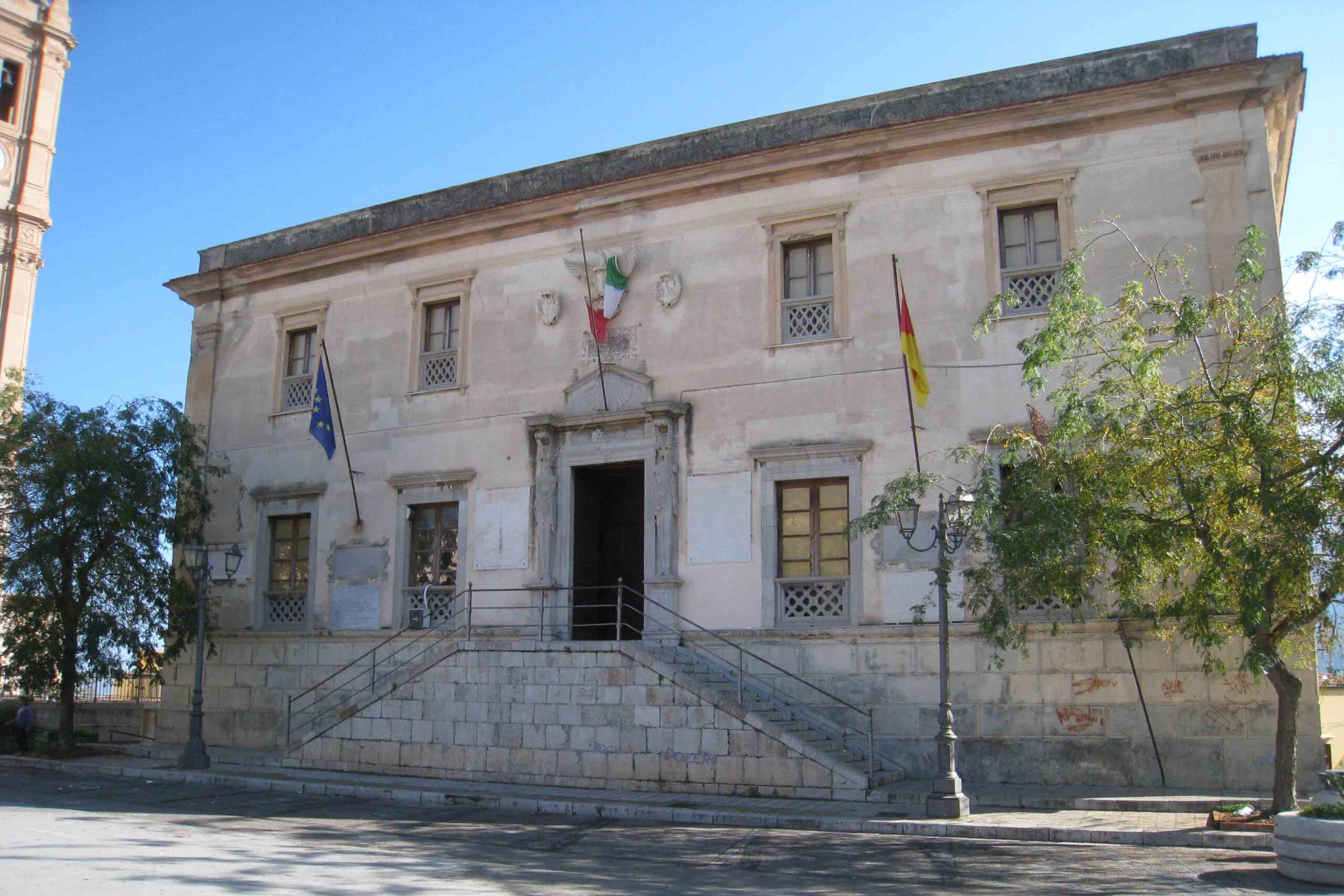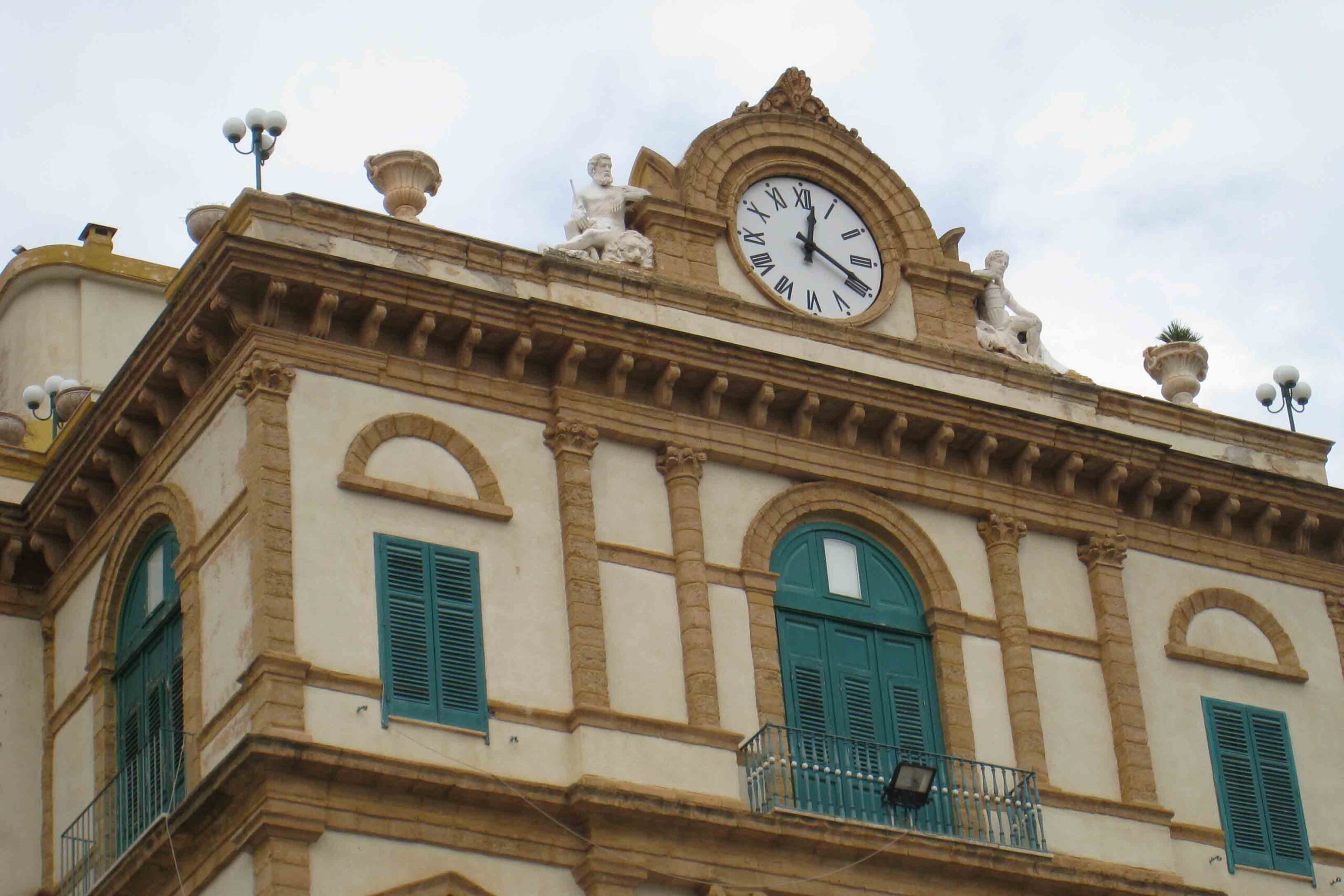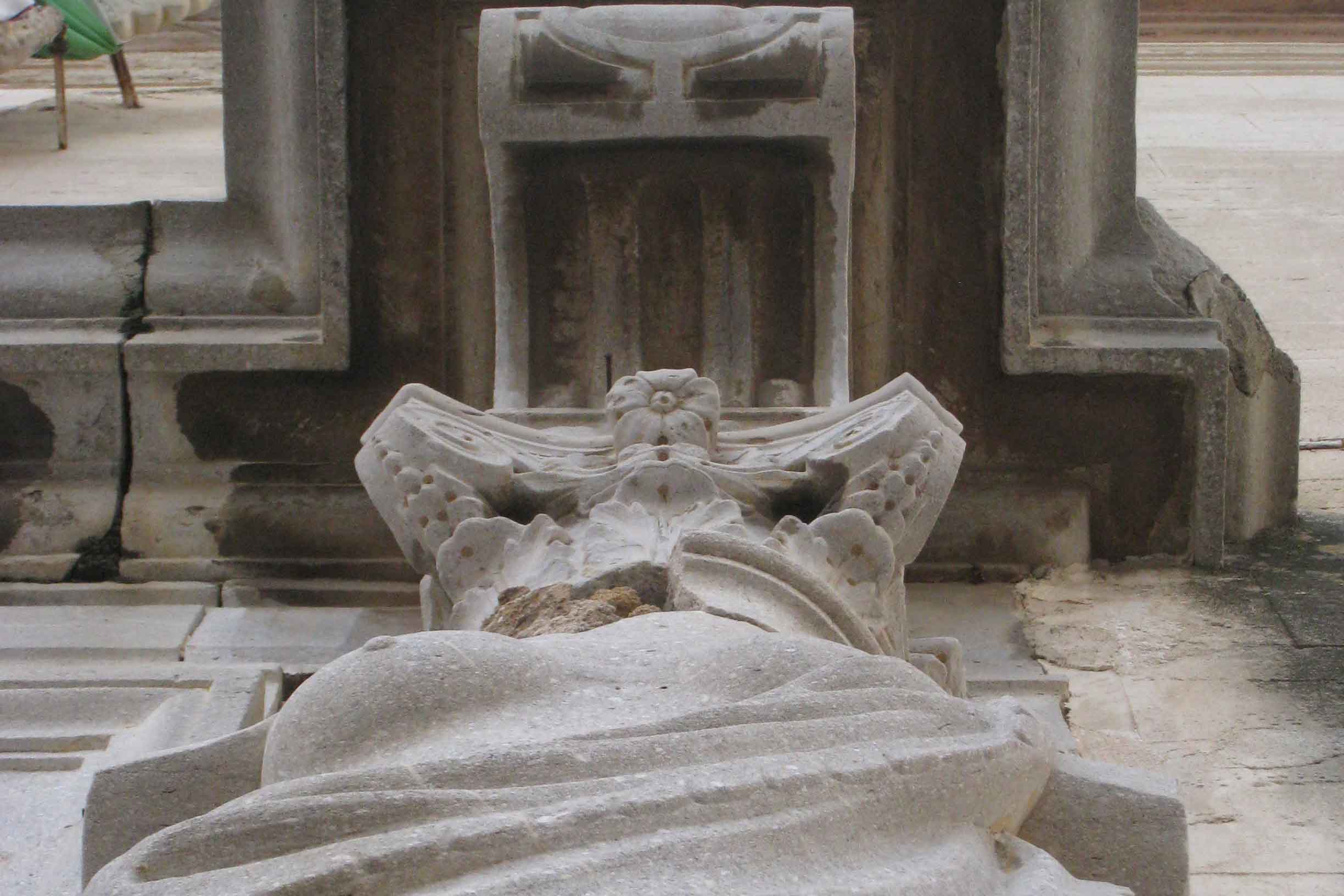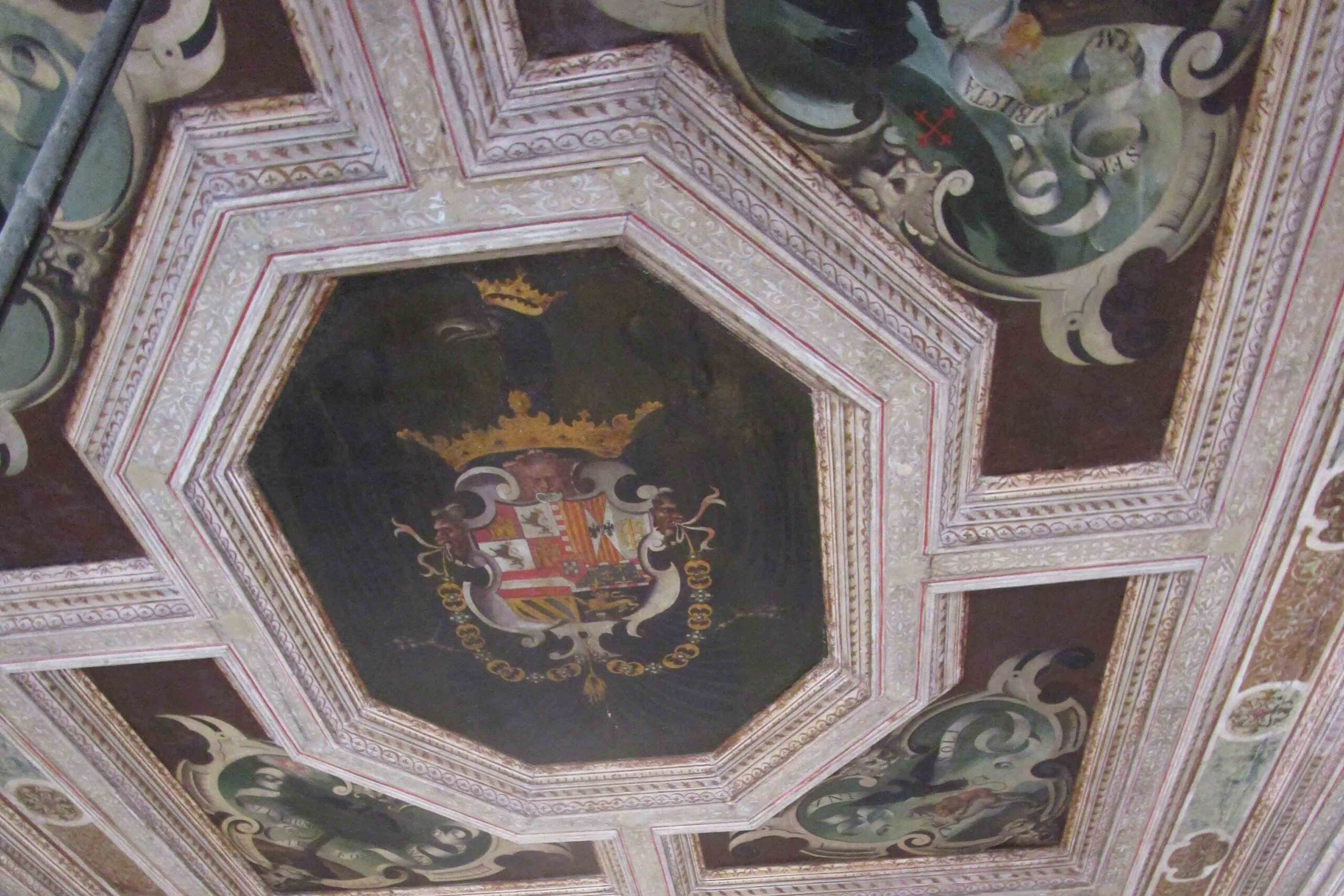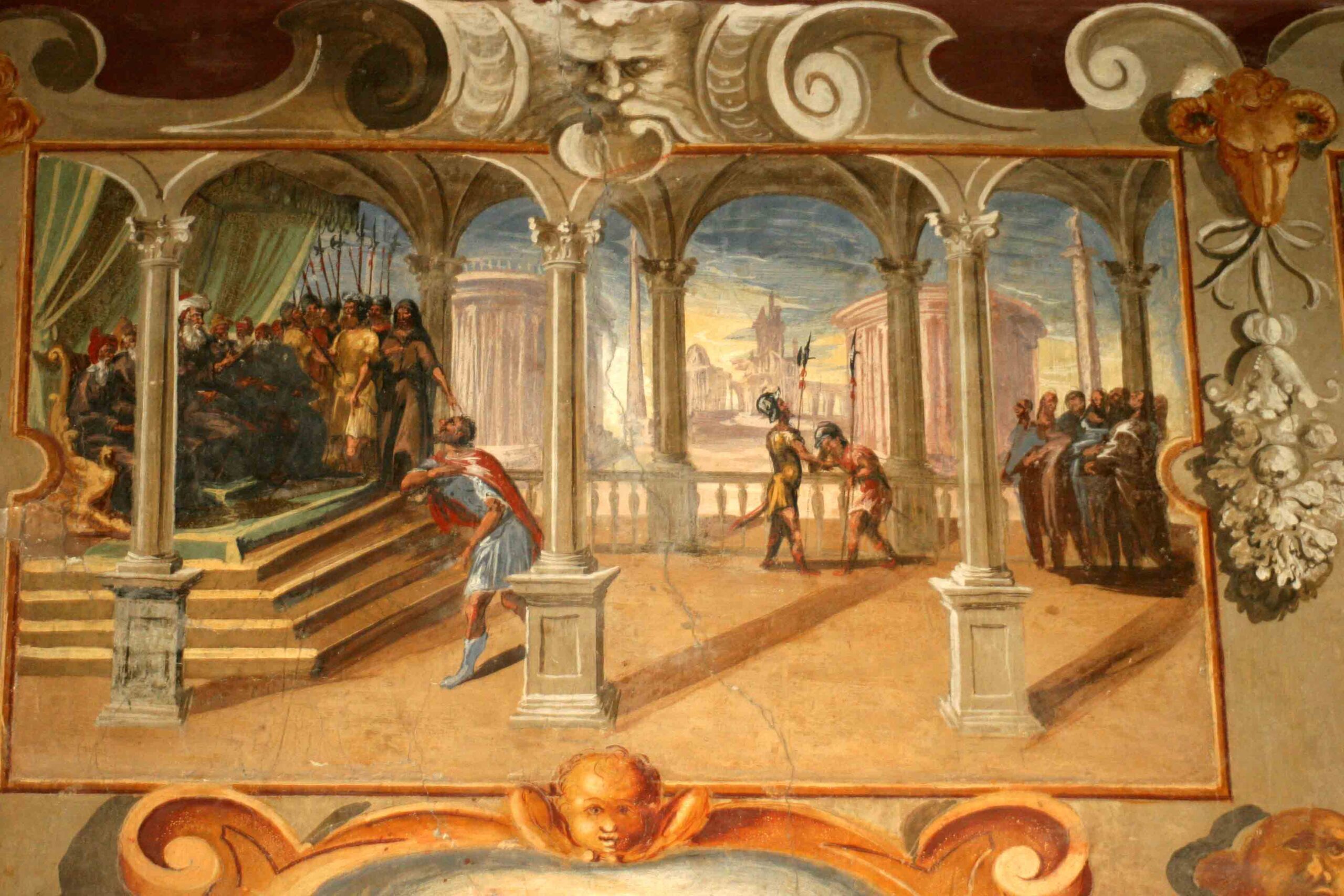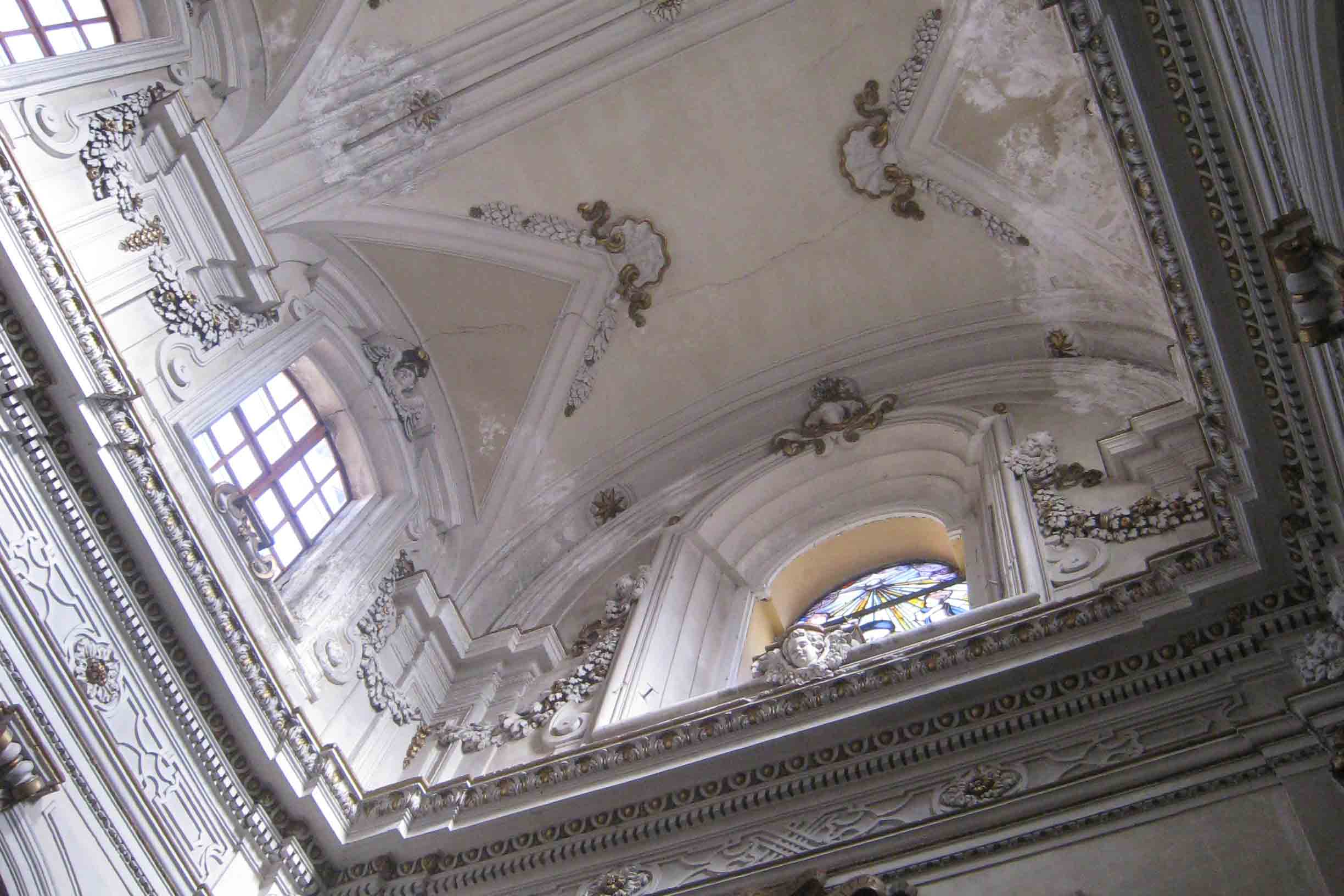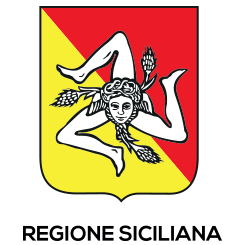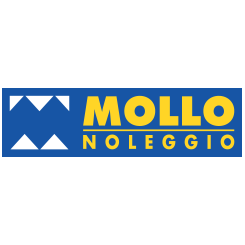profile
map
technical info
This medium mountain stage tackles a series of climbs with moderate gradients, but over 15 km in length. The route takes in climbs to Rocca Vutura, Sperlinga (4 km) and Portella di Bafurco (along the southern slope), and then descends for nearly 40 km (with short counter-sloping stretches), reaching the coastal road that leads all the way to the finish. The roads across inland Sicily are wavy and curving, yet always moderately wide and well surfaced.
Final kilometres
The final kilometres are flat until the last km. Three 90‑degree bends before a railway underpass lead into the short closing climb. Past the ‑1 km marker, the road ascends at around 6%, and takes in 5 successive hairpins leading all the way to the finish (8 m wide) on the Piazza Del Duomo.
start / finish
final kilometres
itinerary timetable
tourist info
Host city:
Enna
Overview
Enna has the highest elevation of any provincial capital in Europe, capable of enchanting you from any point in the city thanks to the beauty of the nature that surrounds it. Perched on a hill of Monte Erei, in the beautiful Sicilian hinterland, it is the only provincial capital not to be bathed by the sea. Due to its position right in the center of Sicily, it was defined by Callimachus as the omphalos (navel) of the island. Enna boasts a rich heritage made up of artistic, architectural beauties and amazing landscapes that make it a destination not to be missed.
Food
Between the sacred and the profane, we cannot but mention gastronomic tradition. On Easter Sunday, abbuttunatu lamb and stigliole are a must. And on Easter Monday, everyone goes to the countryside for a meat barbecue, accompanied by a selection of fried food with fresh broad beans and local wild herbs, such as fennel and mazzareddi, and delicious artichokes cooked in ashes. To finish off the meal, sweet fried ricotta ravioli.
Also here is a list of PGI and PDO products typical of Enna region, guaranteed for excellence and typicality – you absolutely must try them!!! The Piacentinu Ennese, Provola and Supprissata di Nicosia, Vastedda cu’ Sammucu di Troina, Mostarda di Ficodindia di Gagliano, the Cassatelle di Agira, the Tortone di Sperlinga, the Buccellati Ennesi, the Lenticchia Nera, the Pesca Settembrina di Leonforte, the Zafferano Ennese, the Olio delle colline Ennesi, the Pagnotta del Dittaino, la Mandorla Vinciatutti.
Points of interest
The most extraordinary view of Enna opens up before our eyes from the Rocca di Cerere. This was the site of the sacred temple to the Mother Goddess, Demeter for the Ancient Greeks, Ceres for the Romans. The landscape, which opens majestically over the wheat fields, varies according to the season and time of day. The colours change, from the soft shades of dawn to the intense hues of dusk. The myth of Demeter and Kore (Ceres and Proserpine for the Romans) is one of Sicily’s most compelling legends: don’t miss a visit to the Myth Museum in Enna for a fascinating immersive multimedia experience.
Near the Rocca di Cerere we find the symbol of the city of Enna. The Lombardy Castle is one of the largest medieval castles in Italy. It was here that Frederick II of Swabia convened the first Sicilian Parliament. Of the surviving towers, the 13th-century Torre Pisana, also known as the Tower of the Eagles, is the city’s main attraction: Sicily’s quintessential Belvedere. From here, the lookouts of old could control a large part of the island and even see the sea on a clear day. The octagonal Frederick’s Tower, surrounded by the city park of the same name, was connected for centuries to the Lombardy Castle by a tunnel dug into the rock below the city. A short distance away stands the monumental Porta Janniscuru, one of Enna’s ancient gates. It will seem as if we have stepped back in time.
The monumental splendour of Enna’s Duomo dominates the historic centre of the city. Dedicated to the Maria Santissima della Visitazione, Enna’s patron saint, it is listed as a National Monuments, as well as being a UNESCO World Heritage Site. It was built in the Middle Ages, of which it is the main architectural representation, at the behest of the Queen of Sicily Eleanor of Anjou, as an act of celebration for the birth of her son Peter. The Cathedral is majestic from the outside, with a façade featuring splendid elements of Gothic and Sicilian Baroque styles, which blend together to create an architectural work of absolute beauty.
Another religious building to visit is the church of San Marco, with the adjoining cloistered convent of the Discalced Carmelite Nuns, was built on the ruins of an ancient synagogue that marked the boundary of the Jewish ghetto, still remembered today by the name given to the area the Iudeca. It has a single nave in Baroque style with sumptuous stucco work inside that contrasts with the severe linearity of the exterior façade.
On 2 July, Enna celebrates the Madonna of the Visitation, the city’s patron saint, with a level of public participation that makes it one of the most moving patron saint festivals in Sicily. At 7 am on that morning, it’s not the cockerel that awakens you, but the sound of 101 volleys celebrating the city’s patron saint. The statue of the Madonna, covered in gold and precious stones, is placed inside a “Vara”, a large procession float called the Nave d’Oro (Golden Ship) and carried in procession by 118 bearers (the “ignudi” – the naked ones).
But among the religious rites in Enna that you must attend at least once in your life are those of Holy Week. A legacy of Spanish domination on the island, it calls for the participation of a large part of the city’s male population. When “la paesana“, the fog, as the people of Enna call it, descends, the atmosphere becomes even more suggestive and appropriate for prayer.
Termini Imerese
Touristic information
Termini Imerese, one of the primary centres of the metropolitan city of Palermo, is a major rail and maritime hub, as well as a place of great cultural interest. Its territory contains the ruins of the ancient Greek colony of Himera.
Points of interest
Major landmarks include the church of San Giacomo Apostolo, which most likely dates back to the Early Christian era, the Duomo, which is the largest church in town, and the church of Santa Caterina d’Alessandria, which contains 15-century frescoes with inscriptions in the ancient popular vernacular.
The town hall, dating back to the 15th-16th century, stands in the central Piazza Duomo. Inside, it holds beautiful frescoes done by Vincenzo La Barbera in 1610.
The town and its surroundings are a treasure chest of archaeological splendour: major legacy includes the ruins of Roman buildings, including a large portico dating back to the 2nd-1st century BC, and the lower arcades of the amphitheatre, probably dating back to the Augustan period like the aqueduct, the largest and best preserved in Sicily.
The Grand Hotel delle Terme, at the heart of the old town, is a renowned spa resort built around volcanic hot springs that have been known since ancient times.


